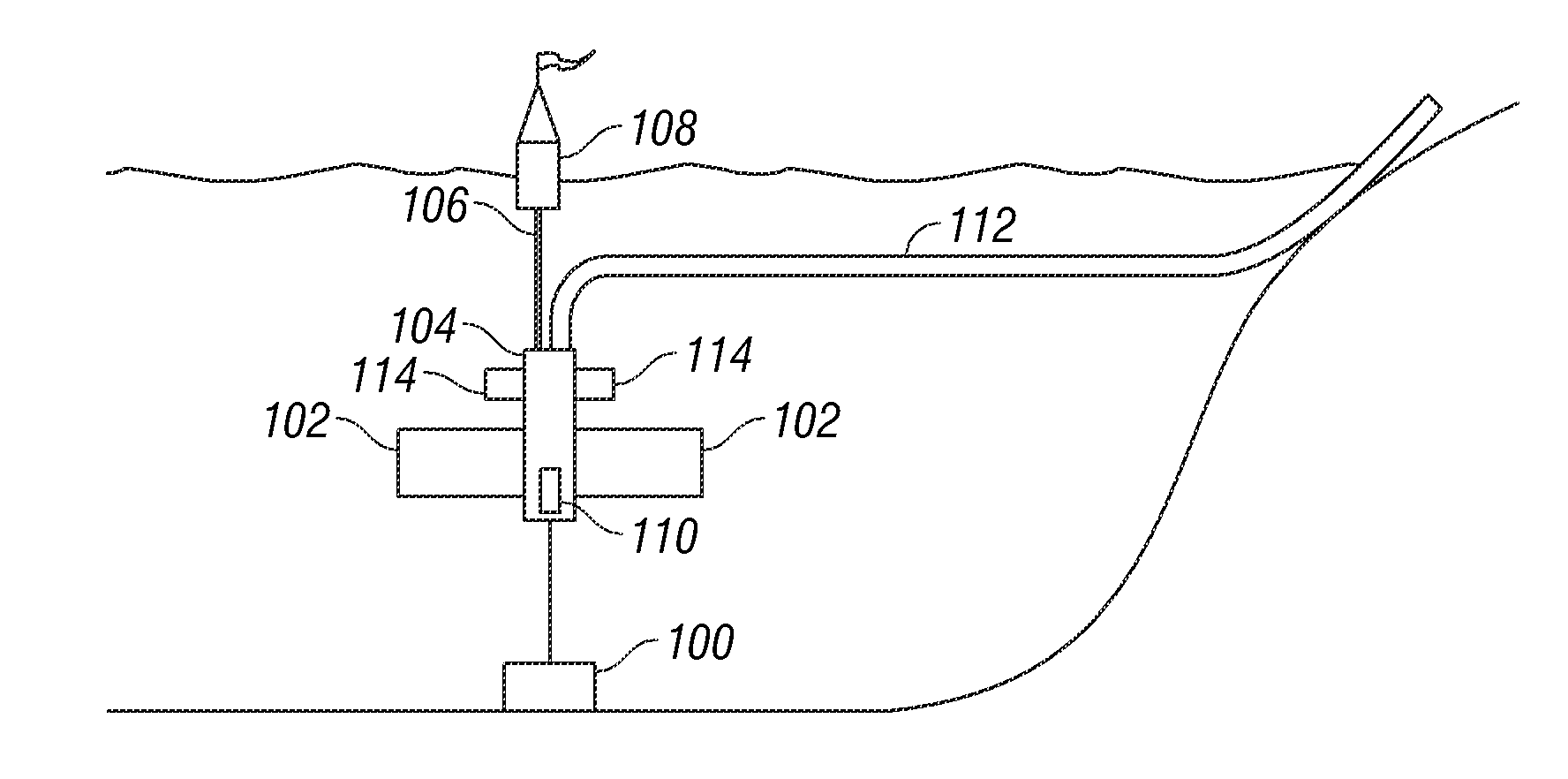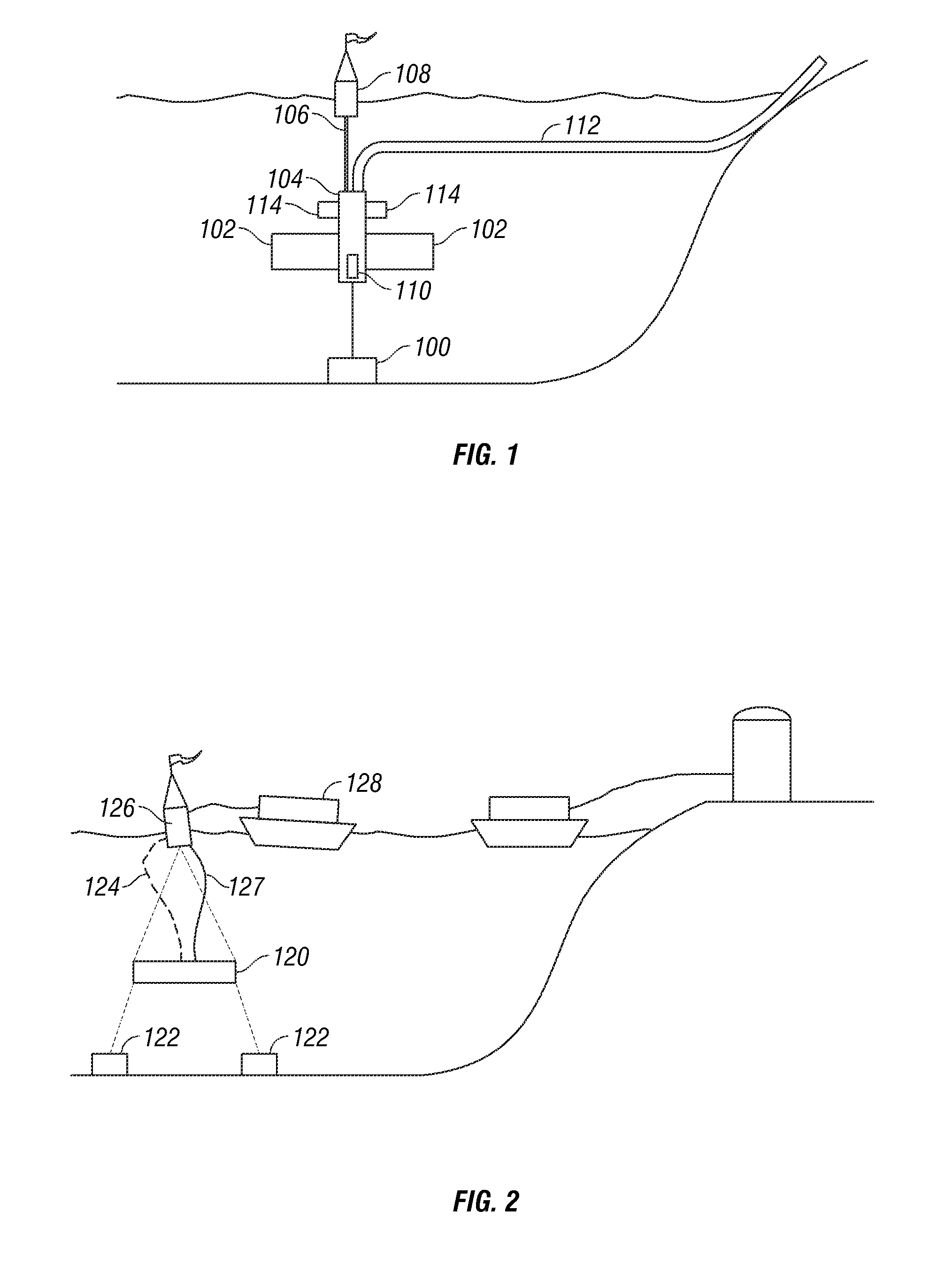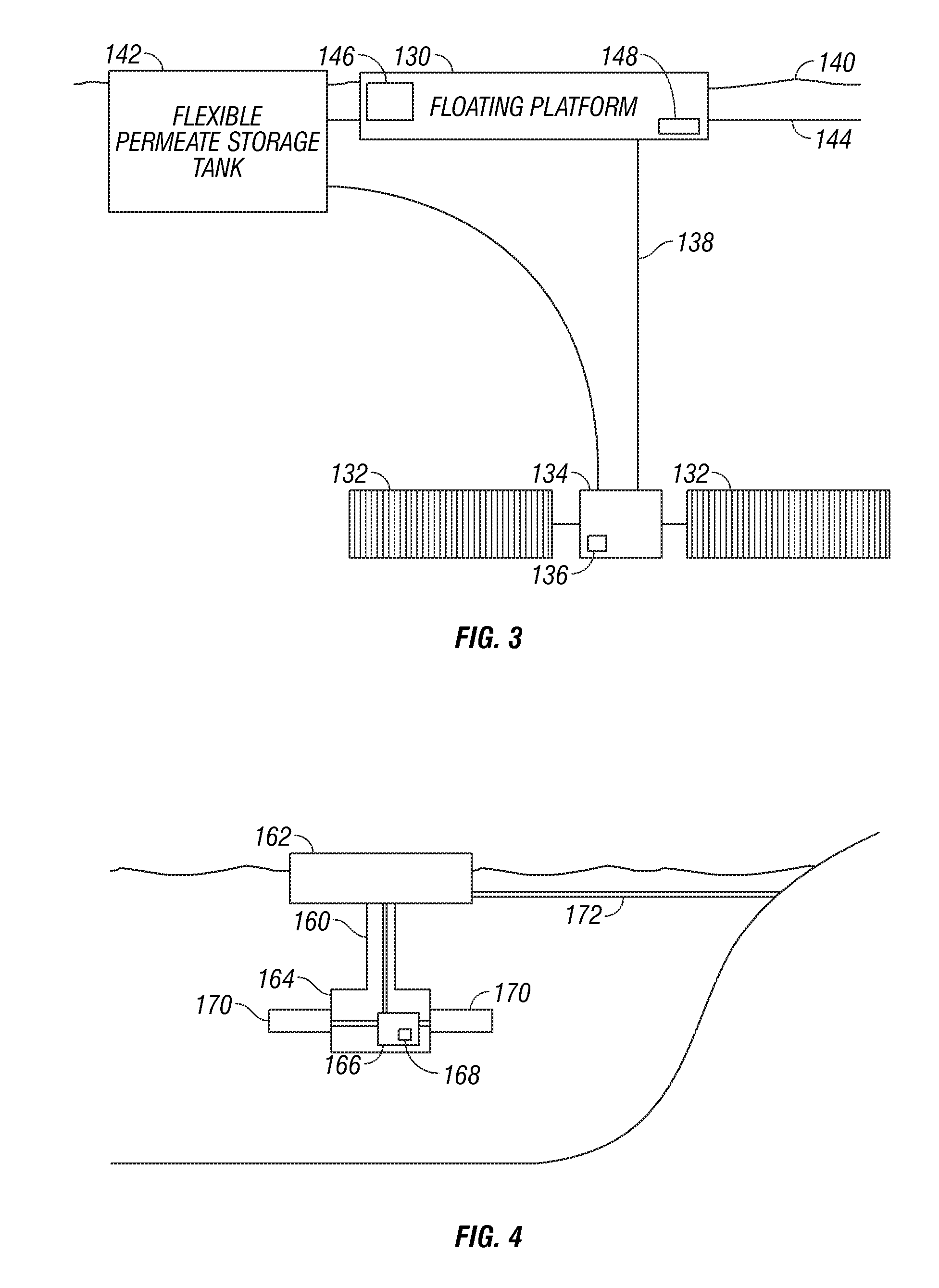Depth exposed membrane for water extraction
a technology of depth exposed membrane and water extraction, which is applied in the direction of membrane technology, membrane technology, reverse osmosis, etc., to achieve the effect of facilitating reverse osmosis or other filtration processes, high efficiency and innovation, and efficient use of hydrostatic pressur
- Summary
- Abstract
- Description
- Claims
- Application Information
AI Technical Summary
Benefits of technology
Problems solved by technology
Method used
Image
Examples
Embodiment Construction
[0103]The following description and examples illustrate preferred embodiments of the present invention in detail. Those of skill in the art will recognize that there are numerous variations and modifications of this invention that are encompassed by its scope. Accordingly, the description of a preferred embodiment should not be deemed to limit the scope of the present invention.
[0104]Conventional reverse osmosis desalination plants expose reverse osmosis membranes to high-pressure saltwater. This pressure forces water through the membrane while preventing (or impeding) passage of ions, selected molecules, and particulates therethrough. Desalination processes are typically operated at a high pressure, and thus have a high energy demand. Various desalination systems are described in U.S. Pat. Nos. 3,060,119 (Carpenter); 3,456,802 (Cole); 4,770,775 (Lopez); 5,229,005 (Fok); 5,366,635 (Watkins); and 6,656,352 (Bosley); and U.S. Patent Application No. 2004 / 0108272 (Bosley); the disclosur...
PUM
| Property | Measurement | Unit |
|---|---|---|
| depth | aaaaa | aaaaa |
| depth | aaaaa | aaaaa |
| depth | aaaaa | aaaaa |
Abstract
Description
Claims
Application Information
 Login to View More
Login to View More - R&D
- Intellectual Property
- Life Sciences
- Materials
- Tech Scout
- Unparalleled Data Quality
- Higher Quality Content
- 60% Fewer Hallucinations
Browse by: Latest US Patents, China's latest patents, Technical Efficacy Thesaurus, Application Domain, Technology Topic, Popular Technical Reports.
© 2025 PatSnap. All rights reserved.Legal|Privacy policy|Modern Slavery Act Transparency Statement|Sitemap|About US| Contact US: help@patsnap.com



